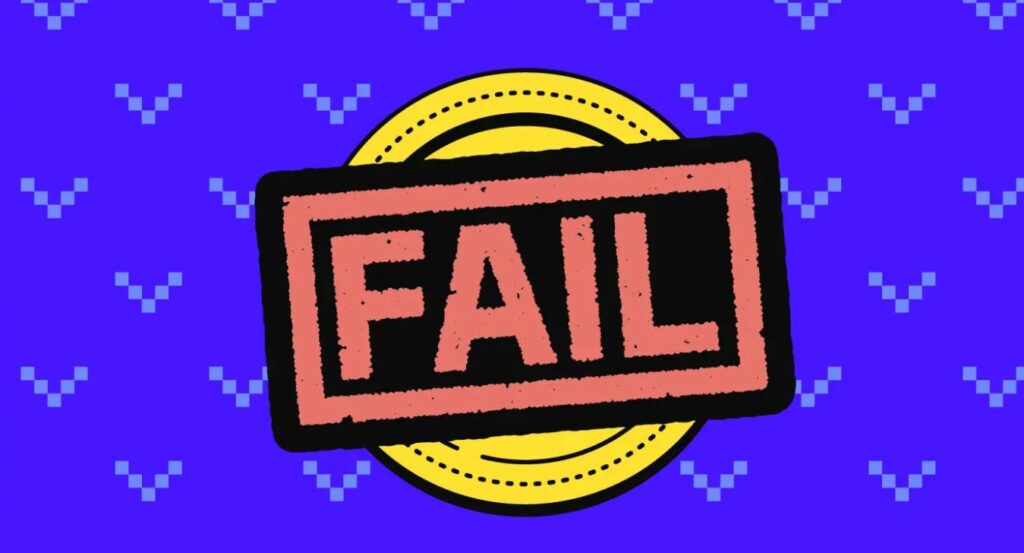
The cryptocurrency world is exciting but risky. While many crypto exchanges thrive, others crash spectacularly, leaving investors with losses and valuable lessons. A failed crypto exchange can shake trust in the industry, but understanding why these platforms collapse helps us make more intelligent choices. In this article, we explore a list of failed crypto exchanges, diving into their stories, the reasons for their failure, and tips to avoid similar pitfalls. Let’s get started!
Mt. Gox
Once the king of Bitcoin trading, Mt. Gox handled over 70% of global Bitcoin transactions in its prime. Launched in 2010, it was the go-to platform for early crypto enthusiasts. However, in 2014, this failed crypto exchange shocked the world when it lost 850,000 Bitcoins, worth around $450 million at the time.
So, what happened? Hackers exploited weak security, and poor management didn’t help. The platform filed for bankruptcy, leaving users empty-handed. Years later, some investors received partial refunds, but the damage was done.
Mt. Gox is often at the top of any list of failed crypto exchanges, serving as a cautionary tale for all.
Lesson: Always prioritize exchanges with strong security measures like two-factor authentication (2FA) and cold storage for funds. Never keep all your crypto on one platform.

QuadrigaCX
QuadrigaCX was Canada’s largest crypto exchange until it became failed crypto exchange in 2019. The collapse began when its CEO, Gerald Cotten, reportedly died unexpectedly, taking access to $190 million in customer funds with him. Sounds like a movie plot, right?
Investigations revealed Cotten controlled all the funds alone, with no backup plan. Worse, he allegedly used customer money for personal trading and lavish spending. The exchange filed for bankruptcy, and users lost millions.
QuadrigaCX is another major name that appears frequently in any list of failed crypto exchanges due to its bizarre and tragic downfall.
Lesson: Choose exchanges with transparent operations and multiple key holders for funds. Be wary of platforms that rely on one person for critical access.
FTX
FTX was a global giant, loved for its sleek interface and celebrity endorsements. Launched in 2019, it grew fast—until it became a failed crypto exchange in November 2022. The collapse wiped out billions in user funds and rocked the crypto world.
FTX misused customer money to bail out its sister company, Alameda Research, which made risky trades. When users rushed to withdraw funds, FTX couldn’t cover the $6 billion shortfall. Its founder, Sam Bankman-Fried, faced fraud charges, and the platform filed for bankruptcy.
Its downfall has secured FTX a permanent place in the modern list of failed crypto exchanges.
Lesson: Avoid exchanges that mix user funds with their investments. Check for clear financial records and regulatory compliance before depositing your crypto.
Cryptopia
New Zealand-based Cryptopia was a favorite for trading smaller altcoins. Launched in 2014, it gained a loyal following until it joined the list of failed crypto exchanges in 2019.
A massive hack drained $16 million in crypto from Cryptopia’s hot wallets. The exchange tried to recover but couldn’t regain user trust. It entered liquidation, and many investors never recovered their funds.
Lesson: Stick to exchanges with robust cybersecurity, like regular audits and insurance for hacks. Always store most of your crypto in a personal wallet, not on the exchange.

BTC-e
BTC-e was a Russian-based crypto exchange linked to money laundering, particularly connected to the infamous Mt. Gox hack. In 2017, U.S. authorities shut it down and arrested one of its operators.
The platform was accused of handling over $4 billion in illegal funds. Many users lost access to their accounts and have never recovered their funds.
BTC-e is yet another notorious name in the global list of failed crypto exchanges, especially due to its legal implications.
Lesson: Use regulated exchanges that comply with international laws and know-your-customer (KYC) rules.
Yobit
While Yobit hasn’t failed completely, it’s on many crypto watchdogs’ radar. Users have reported withdrawal issues, manipulation of token prices, and a lack of customer support.
Though still operational, it’s often mentioned alongside the list of failed crypto exchanges due to its suspicious activities and reputation.
Lesson: Just because an exchange is active doesn’t mean it’s safe. Do your research and avoid platforms with a bad reputation.

Why Do Crypto Exchanges Fail?
Now that we’ve reviewed the top failed crypto exchanges, let’s explore some common reasons behind these failures:
- Poor Security: Most exchange failures start with security breaches. Lack of multi-factor authentication, outdated software, and poor monitoring can lead to devastating hacks.
- Financial Mismanagement: Using customer funds for personal gain, risky investments, or failing to maintain proper reserves has brought down even the biggest platforms.
- Regulatory Pressure: Some platforms operate in a legal gray zone. Once regulators step in, these platforms may be forced to shut down or face legal trouble.
- Lack of Transparency: Without regular audits or clear company structures, users don’t know where their money is or how it’s used — a recipe for disaster.
- Leadership Failures: Unqualified or dishonest leadership, like in the case of QuadrigaCX, can lead to fraud and mismanagement.
These issues are common threads across the list of failed crypto exchanges, and recognizing them early can help protect your investments.

How to Protect Yourself from Failed Crypto Exchanges
To avoid becoming a victim of failed crypto exchanges, follow these tips:
- Use hardware wallets or non-custodial wallets to store your crypto.
- Choose exchanges with strong reputations, regulatory licenses, and transparent leadership.
- Look for insurance policies or proof of reserves to ensure your funds are backed.
- Diversify your holdings. Don’t keep all your assets on a single platform.
- Stay informed by following crypto news and being alert for red flags like frequent outages, delayed withdrawals, or leadership changes.
Final Thoughts
Crypto may be the future of finance, but that doesn’t mean every platform in the space is trustworthy. The list of failed crypto exchanges reminds us that no matter how big or famous a platform is, poor management, security gaps, or lack of oversight can lead to collapse.
By learning from these failures, you can take steps to secure your assets and trade with confidence in a high-risk environment. Always stay alert, do your research, and never leave your crypto in the hands of an exchange for longer than necessary.























